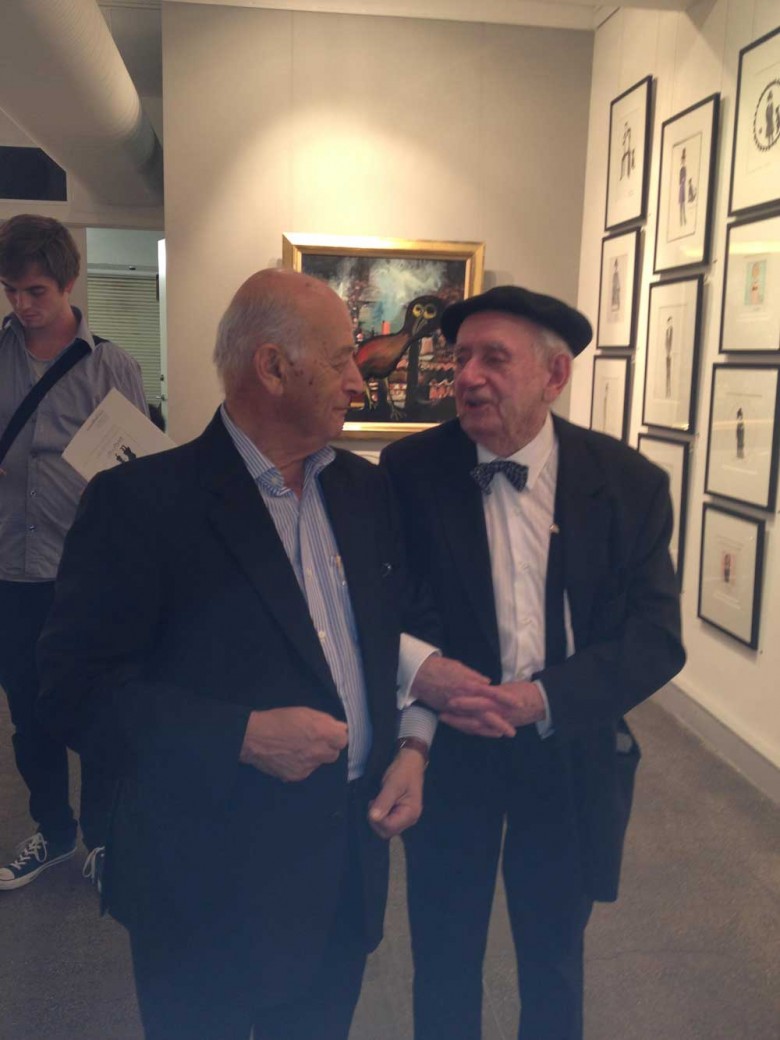
Vale Charles Blackman OBE (1928 – 2018)
Written by: Dr Eugene Barilo von Reisberg
We were saddened to learn of the passing of Charles Blackman on 20 August 2018, shortly after his 90th birthday. Charles Blackman was one of the most beloved and revered Australian painters. His subject matter – drawn from literature, music, theatre, overseas travel and his lived experience – revealed an enquiring mind and erudite imagination. The awkwardly drawn figures, the odd angles of his perspectives, and the brightly-coloured palette witnessed the fascination with the European modern masters, whose influence the artist had combined into a unique, inimitable, and highly recognisable style. The enduring popularity of his paintings rests in their essence as a pensive meditation on the human condition couched in the visually disarming vocabulary of a childish, dream-like state.Blackman’s ailing health had precluded him from producing, in later stages of his career, time-consuming, compositionally complex, large-scale paintings. From the 1990s onwards, his artistic imagination was channelled through works on paper. Drawing was always the basis of Blackman’s creative process. The immense corpus of his graphic oeuvre demonstrates the artist’s indomitable impulse to draw. It had sustained Blackman creatively, emotionally, spiritually – and physically – throughout his artistic journey, from the earliest, formative period of his career to the last days of his life. The innumerable life drawings bear witness to the artist’s rigorous training and continuous self-improvement to maintain his professional stature. The studies, which can be related directly to his celebrated paintings, reveal his creative processes, from working out individual elements to resolving overall compositional structures. Some of the drawings, due to their highly finished state, comprehensible narrative, and compositional coherence, transcend the essence of the sketch and stand on their own as autonomous works of art, demonstrating Blackman’s technical proficiency in a variety of media.
The emotional gravitas and psychological acuity of Blackman’s vision resonates deeply with the viewing public. As the result, many of his works, especially those from the Schoolgirls and Alice series, have entered the Australian vernacular and are considered to be among the most iconic images in the annals of Australian art. The enduring legacy of his works had been the subject of curated survey exhibitions and scholarly monographs, while his importance to the Australian cultural landscape has been recognised by representative holdings of his works in all national and state galleries, and significant regional and tertiary collections.
We wish to pay our respects to Blackman’s prodigious talent, lasting legacy and inestimable contribution to Australian and International Art. We also would like to take this opportunity to express our deepest condolences to the artist’s family—his former wives, Barbara, Genevieve, and Victoria; his six children, Auguste, Christabel, Barnaby, Bertie, Felix, and Axiom, as well as (the growing number of) the artist’s grand-children and great grand-children. As our founding director, Tom Lowenstein, Charles Blackman’s personal friend of many, many years, said at the artist’s memorial service, ‘For a small man, he cast a giant shadow.‘


